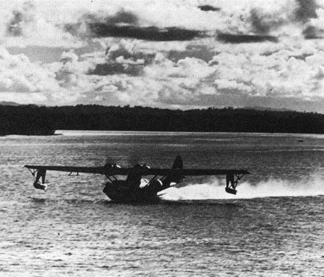
Catalina "on the step", ie. - about to become airborne (U.S. Navy)
(Source: "Black Cat Raiders of WWII" by Richard C. Knott)

Catalina "on the step", ie. - about to become airborne (U.S. Navy)
(Source: "Black Cat Raiders of WWII" by
Richard C. Knott)
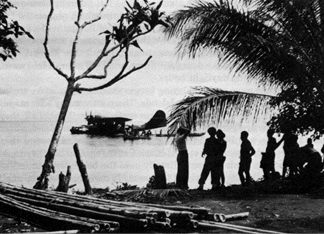
A VP-44 Black Cat delivers supplies to coastwatchers. (Captain G. Bogart collection)
(Source: "Black Cat Raiders of WWII" by
Richard C. Knott)
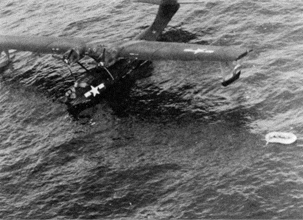
A VP-34 Cat (#69) doing one of it's daytime jobs, picking up downed aviators. Three B-24
crewmen have just been recovered, their empty raft is nearby.
(Source: "Bless 'Em All" by Robert Hayes)
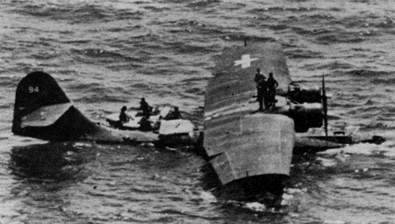
Open-sea landings were hazardous under the best conditions. (Captain J.M. Busker
collection)
(Source: "Black Cat Raiders of WWII" by
Richard C. Knott)

In New Guinea in late 1943, Black Cats of VP-11 assisted in the evacuation of Australian
troops operating on the Sepik River, far behind enemy lines. More than 200 of the Aussies
were brought out as the Cats made landings and takeoffs from the narrow, swift flowing
river.
(Source: "PBY Catalina in Action" by
Squadron/Signal Publications)
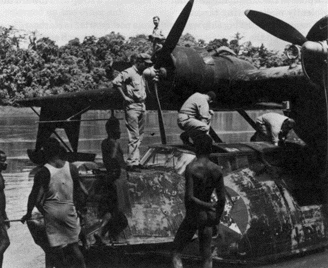
A VP-11 Black Cat on the Sepik River, New Guinea (Frank W. Morris collection)
(Source: "Black Cat Raiders of WWII" by
Richard C. Knott)

A Black Cat near Samarai Island on December 23, 1943. Note the two engine cowlings
recently taken
from a non-Black Cat PBY, that still wear the blue/grey color scheme of the PBY from which
they came.
(Source: Airpower magazine, November 1994)
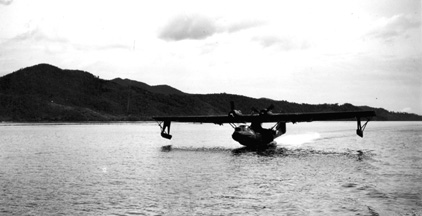
PBY of the "Fly-by-Night" squadron taking off at the end of an overcast day from
a quiet harbor in the Solomon Islands.
(from the archives of the San Diego Aerospace Museum)

Lt(jg) Collin Siller tries out his newly repaired PBY on July 10, 1944 after leaving the
RAAF maintenance depot at Lake Boga. (Ken Chatley collection)
(from the archives of the San Diego Aerospace Museum)
NEW! -
Another view of VP-54 Black Cat #B64 (see the photo on Photo page 4), being
towed off of its launching ramp.
(this image is from the Dictionary of American
Naval Aviation Squadrons - Vol. 2)
Go to Photo Page
#1 - #2 - #3
- #4 - #5 - #6 - #7
- #8 - #9 - #10
- #11 - #12 - #13